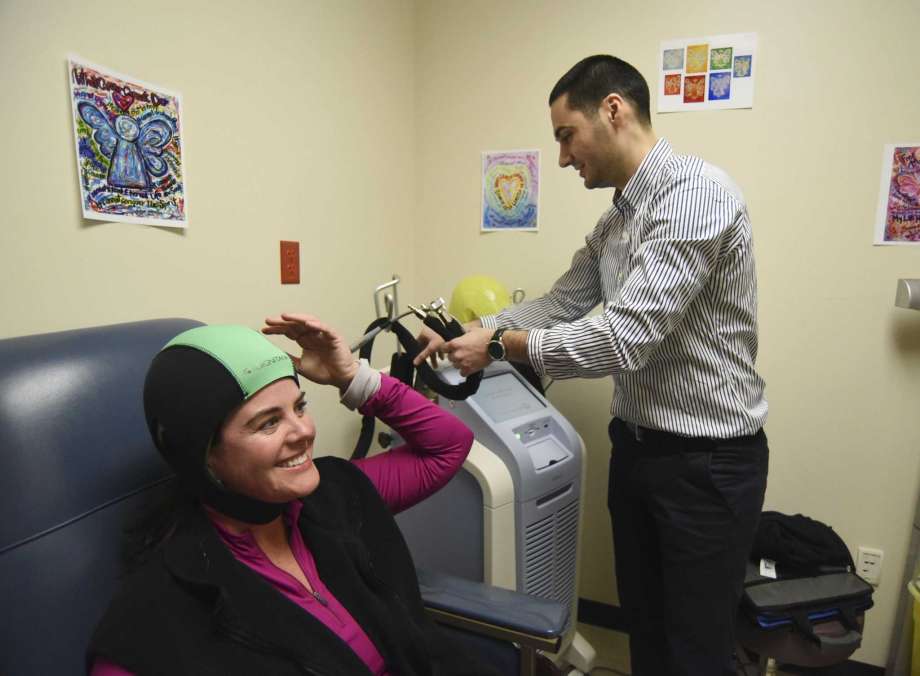By Brittney Martin
San Antonio Express-News
WWR Article Summary (tl;dr) A scalp-cooling cap reduces blood flow to hair follicles, on women undergoing chemotherapy for breast cancer. The idea is that the cap constricts blood vessels so less chemotherapy reaches the scalp, and slows cell activity in the area.
San Antonio Express-News
For many women, fighting breast cancer means facing a number of potential losses, from their hair to their breasts to their lives.
The San Antonio Breast Cancer Symposium, running through Saturday, is full of studies and research focused on saving the latter. But one study by Dr. Julie Rani Nangia, an assistant professor of medicine at the Lester and Sue Smith Breast Center at Baylor College of Medicine in Houston, focused on a new tool aimed at preventing hair loss.
Nangia studied the Orbis Paxman Hair Loss Prevention System, a scalp-cooling cap that reduces blood flow to hair follicles, on women undergoing chemotherapy for breast cancer. The idea is that the cap constricts blood vessels so less chemotherapy reaches the scalp, and slows cell activity in the area.
There is already one cap system of this kind on the market called the DigniCap. That product received Food and Drug Administration approval in December 2015. Paxman would be a competitor; it’s seeking FDA approval for its scalp-cooling system based on the results of Nangia’s trial.
Women tend to lose their hair during chemotherapy because hair cells divide rapidly, like cancer cells. Chemotherapy targets all rapidly dividing cells because it can’t distinguish between the good and the bad. The cold is meant to slow the cell division of the hair follicles.
“(Cancer) treatment is really important and a lot of money goes into treatment, but I also think supportive care is very important,” Nangia said. “Going through breast cancer is hard enough, but then when you lose your hair and everyone knows and it changes your body image, it can be really distressing to patients.”
The study followed women with early stage breast cancer that planned to undergo four or more cycles of chemotherapy. Of the women randomly chosen to wear the cooling cap, 50.5 percent retained at least half of their hair and did not require the use of a wig after four cycles, compared to zero percent of the women observed that did not wear the cap.
The women that underwent scalp cooling wore a fitted inner cap that fits tight and covers their hairlines completely, and an outer cap that holds the inner cap in place. A refrigeration device circulates cooling liquid through the inner cap to maintain a constant, cool temperature. The cap is worn before, during and after chemotherapy.
Sharon Hudspeth, 52, wore the Paxman cooling cap during her chemotherapy treatment at Baylor Sammons Cancer Center in Dallas. Hudspeth was diagnosed with breast cancer in November 2014 and underwent a double mastectomy in December 2014.
She said she decided to join the Nangia’s clinical trial because she wanted to help other women keep their hair, even if there was a chance the cap couldn’t help her keep her own.
“For me, personally, it’s not that big of a deal,” Hudspeth said. “But I’ve had friends who had to go through it and shave their hair and I saw how traumatic it is for them.”
She said wearing the cap felt like having a brain freeze at first, but then she became numb to the cold.
Hudspeth began losing her hair less than two weeks into her first chemotherapy treatment. She said it was coming out at work and at home, leaving her with bald patches. She decided to go ahead and shave her head and wait to see what would happen.
In the middle of her second chemotherapy treatment, her hair began to grow back, and it kept growing. Hudspeth said having her hair gave her a sense of privacy during her chemotherapy.
“If you have your hair, no body really knows what’s going on with you,” Hudspeth said.
Europeans have been experimenting with scalp cooling for decades, according to The Rapunzel Project, a group that raises awareness about the potential benefits and methods of scalp cooling. But Americans have been slower to catch on.
Many take a do-it-yourself approach to scalp cooling. Companies made “cold caps,” which are a set of frozen caps that were switched out several times over the course of a treatment cycle. Keeping the caps cold required either dry ice or the presence of an extra cold freezer in the chemotherapy facility.
In February, the DigniCap was used for the first time in San Antonio. At the time, the price of treatment was still being determined, but reports estimated that the total cost could range from $1,500 to $3,000.
“The next step is that we need advocates to try to petition to make this a covered benefit if we want it to be more available to everyone,” Nangia said.
















































































































































































































































































































































































